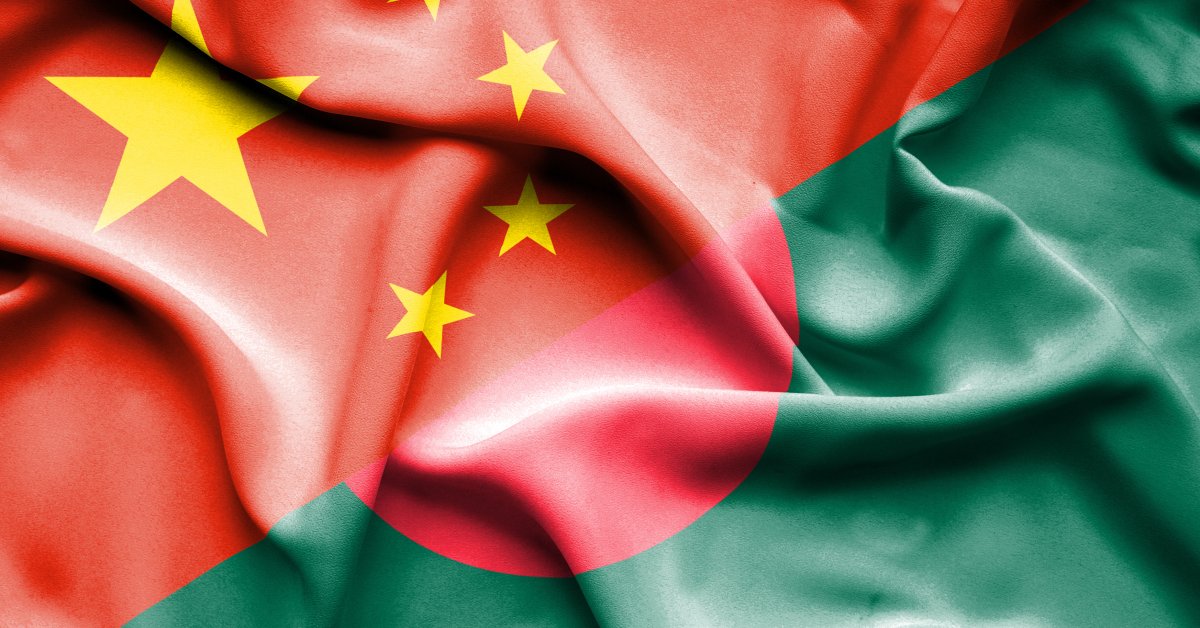Bangladesh is in talks with China for a loan of about $5 billion to bolster the nation’s dwindling foreign-exchange reserves, the central bank governor said, drawing the South Asian country closer to Beijing.
The funds will be denominated in yuan and give exporters access to financing they can use to pay for much-needed raw material imports from China, Governor Abdur Rouf Talukder said in an interview in Dhaka on Tuesday. The talks are at a technical stage, he added.
Bangladesh’s imports from China exceed its exports by more than 10 times, putting huge strain on the country’s reserves. “If we get this loan, it will help us in two ways: we can settle some of the Chinese payments in yuan and it will help to build our reserves because renminbi is a reserve currency” approved by the International Monetary Fund, he said.
Read More: Is Southeast Asia Leaning More Toward China? New Survey Shows Mixed Results
The country’s foreign reserves have steadily declined since the pandemic, largely due to plunging exports—garment shipments make up about 10% of the economy—and soaring prices of commodities. Bangladesh last year secured $4.7 billion in loans from the IMF, helping it ward off the kind of economic crisis that Sri Lanka went through. Still, exports remain under pressure and importers are struggling to get their hands on dollars. Fitch Ratings in May cut the nation’s credit score further into junk because of its falling reserves.
Reserves stood at $21.8 billion as of June 30, enough to cover 2.5 months of imports, according to central bank data. The IMF has set a target of 3.6 months of import cover by June 2027. Imports from China stood at $16 billion in 2023.
In his first exclusive interview since being appointed to the role two years ago, Talukder said he expects reserves to improve after September once the U.S. Federal Reserve starts cutting interest rates. That would fuel inflows into developing markets like Bangladesh, while commodity prices have also returned to pre-Covid levels, meaning less demand for dollars to pay for imports, he said.
Prime Minister Sheikh Hasina is due to travel to Beijing next week, where funding support will likely be on the agenda. Bangladesh shares strong commercial and defense ties with China, which is the South Asian nation’s biggest trading partner.
Read More: Sheikh Hasina and the Future of Democracy in Bangladesh
A country of more than 170 million people, Bangladesh is heavily reliant on the garment industry and remittances from abroad for foreign inflows. Global clothing brands like Hennes & Mauritz AB, Adidas AG, Wal-Mart Inc. and Gap Inc. have operations in the country.
Under the IMF loan program, Bangladesh is required to undertake a number of reforms, including on the currency and budget to help put the economy on a stronger footing. Bangladesh Bank is moving away from a managed currency framework to help rebuild its foreign exchange reserves. In May, it introduced a crawling peg system for the taka as the first step toward adopting a free-floating currency.
Talukder said moving to a floating currency hinges on an improvement in the balance of payments—which broadly refers to the difference between the foreign inflows and outflows of a country—and reserves.
“We need to wait until the balance of payments turns positive and reserves start building,” he said. “When these conditions are met, we’ll go pretty much for the open market.”
Talukder said the central bank’s “first and foremost responsibility” is to bring inflation down to a desired level of below 6% in the current fiscal year ending in June 2025. Inflation remains around 9% despite the central bank hiking its benchmark interest rate by 350 basis points to 8.5% since May 2022.
“From July onwards, we’ll see that inflation will start declining,” the governor said.
Talukder, 60, took office in July 2022, facing a currency devaluation and inflation spike at the time. He’s since tried to bring more flexibility to market interest rates and the currency, and played a key role in helping the country secure the IMF’s loan last year.
Prior to joining the central bank, Talukder worked for 22 years in the finance ministry, including four years as the finance secretary, playing a key role in budget reform. He helped to streamline government administration, such as implementing payroll automation for employees.
For the next two years of his term, Talukder said his main goal is to clean up the banking system. Analysts have pointed to governance failures in the banking sector, which have led to high loan default rates, posing significant risks to the overall economy.
Talukder said he wants to bring the non-performing loan ratio at banks down to below 8% by the end of June 2026, from about 11% in March, and improve governance.




